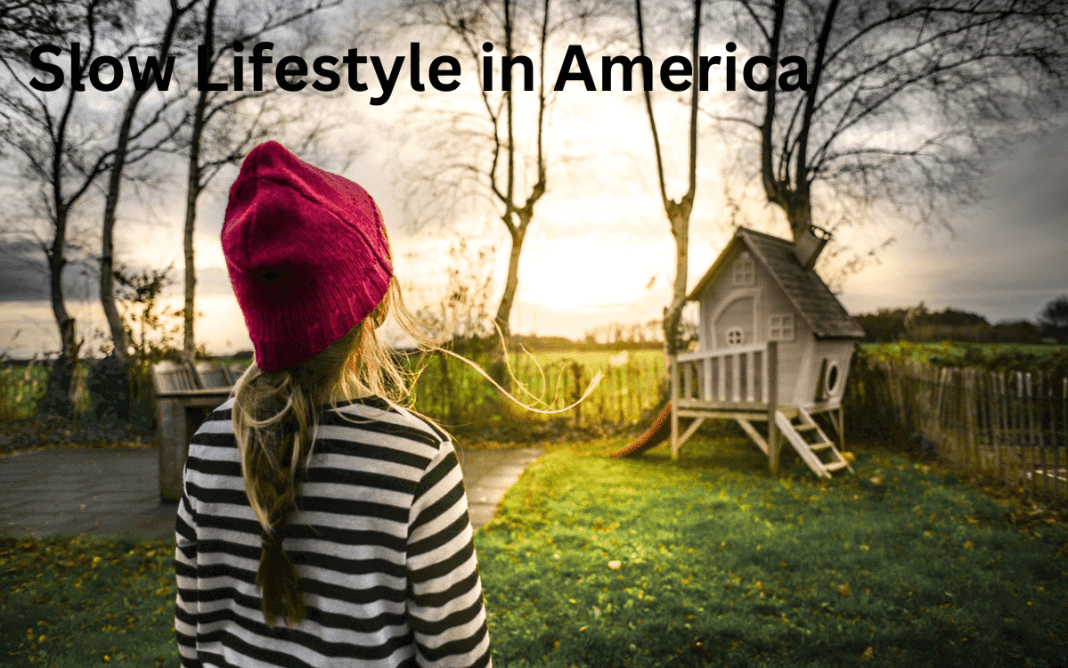More People Are Adopting Slow Lifestyle in America

A slow lifestyle is deliberate, purposeful, and unburdened by meaningless activity. People who adopt a slow lifestyle in America and follow this fad tend to be very careful with how they spend their money and time. Slow-living proponents, in particular, are aware of how much time they spend on electronic gadgets.
The leisurely lifestyle looks different for some people, though.
Others may choose to construct their entire lives around homesteading, while others may just prioritize family above job.
The rising rates of Burnout and toxic productivity are two major factors fueling this development.
Individuals have steadily been more pressurized by society’s urge to constantly be busy and never have downtime. Toxic production describes this phenomenon.
Health Tips For Winter; For A Healthy And Happy Winter Season
Slow Lifestyle in America
The concept of “slow living” refers to the practice of taking one’s time and enjoying the process of one’s daily activities. This way of life has its roots in the 1980s and ’90s Italian slow food movement, which championed the use of time-honored methods of food production in reaction to the rising popularity of fast food.
In line with the goals of the green movement, “slow living” comprises a wide variety of sub-categories, such as “slow money” and “slow cities, which provide answers to the adverse environmental effects of capitalism and consumerism. The unhurried lifestyle in America is a new trend following for fewer years.
The Best 10 U.S.-Based Home and Interior Design Firms
Explain the Concept of “Slow Living.”
Practicing a slower, more deliberate pace in all areas of life is at the heart of the “slow living” philosophy. Finding your priorities in life and allocating your time and energy to them is the key.
Taking one’s time to do things right allows one to appreciate them more, as Carl Honoré writes in his 2004 book In Praise of Slowness. Instead of rushing through life to be more “productive,” taking it easily allows us to appreciate each moment as it occurs.
The connection between slow cuisine and slow living is explored in Carl Honoré’s book, which contributed to the movement towards the latter. The notion took off fiercely during the pandemic when a worldwide slowdown spurred a desire for many persons to pull back and “reconnect with meaningful hobbies, nature, and ourselves,” writes Slow Living LDN.
Vertical Mouse Benefits; The New Development in Mouse Technology
Slow living is different from being lazy, sluggish, or uninspired.
In contemporary culture, characterized by pervasive commercials promoting productivity and a constant influx of trends, the concept of leisurely living is very transformative.
Honoré conveyed to Martha Stewart that the idea is indeed a very transformative one inside a society characterized by a fast-paced lifestyle, where individuals are always engaged in a race against time.
Honoré’s adoption of the slow living philosophy resonates with Audre Lorde’s conceptualization of self-care as articulated in her seminal work, A Burst of Light, published in 1988.
Ensuring personal wellbeing is not only a privilege but an essential requirement, as it serves as a form of political guerilla warfare.
Slow life does not equate to a lack of initiative or motivation, contrary to popular belief. When we change the things we perform, we get “the headspace to prioritise what’s important and assign the right amount of time to each task or activity,” as Slow Living LDN puts it. This is not to argue that we should slow down in every aspect of our lives.
To What End Is Slow Living Valuable?
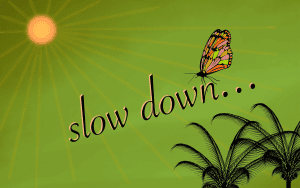

A major tenet of slow living is reclaiming our time, whether that means cutting off hobbies like mindless scrolling and Netflix bingeing or learning to say no to obligations that don’t align with your values. There may appear to be more hours in the day, allowing us to devote more time to the pursuits, people, and activities that matter to us most.
Slow living enables us to bring greater thoughtfulness into our lives. By reminding us why we do the things we do on a daily basis, intentionality allows us to experience greater depth and satisfaction from those activities.
Honoré expressed to Martha Stewart that the negative impacts of our current situation are detrimentally affecting several aspects of human functioning, including cognitive abilities, connectivity, innovation, productivity, and creativity.
Furthermore, Honoré emphasized that these adverse effects extend beyond individual wellbeing, including areas such as health, dietary habits, interpersonal relationships, family dynamics, community dynamics, and educational institutions.
Living a slower lifestyle also means being more in tune with the natural world. Eating locally grown food, ignoring fashion trends, and taking advantage of opportunities to walk and bike will all improve your health and the health of the world.
The practice of slow living presents an opportunity to cultivate intentionality in our everyday routines. By mindfully approaching our actions and thoughts, we can enhance our overall well-being and productivity.
What’s Another Perk?
Creating conditions for a more reflective use of electronic devices. Slow living doesn’t always imply ignoring technology or other contemporary comforts but rather guarantees that technology is helping us instead of the other way around.
Last but not least, slow living implies investing more time and energy into our connections with others. With less pressure and more free time, we can devote more power to the people and projects that truly matter to us while spending less time on those that don’t.
The wealthy may afford to take it easy at work or quit altogether. At the same time, the less well-off may need help to carve out time for activities like meditation, cooking from scratch, or focusing on hobbies.
Slow living, like many other modern fads, has been romanticized on social media and placed in close proximity to the increasingly meaningless concept of “self-care.”
Leah Thomas, creator of Intersectional Environmentalist, told i-D, BIPOC individuals tend to live slower, leading to less consumption, as per i-D.”My grandma spends hours at a time on her porch.”
Mindfully caring for oneself and one’s environment is the essence of slow living, not buying costly t-shirts (sustainable as they may be) or riding one’s bike to work.
Your Guide to Buy BMW Car Covers Online
Causes
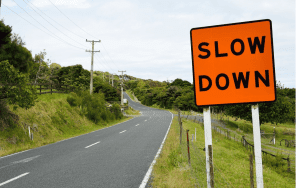

1, Burnout
Managerial Instability as a Leading Cause of Burnout in the Year 2023
Every month in 2022, more than four million American workers will voluntarily leave their occupations.
And when the stress of carrying the weight of the world (or at least the company) on their shoulders continues to mount, 70% of those in the C-suite have seriously contemplated leaving for a position that better supports their mental health and wellbeing.
According to a recent Slack poll, Burnout is on the rise worldwide, especially in the United States, where 43% of middle managers reported feeling burned out.
So, what’s up here?
Leaders in organizations are under increasing pressure to acquire the soft skills necessary to combat staff burnout. But are they tiring themselves out trying to strike a balance between emotional intelligence and performance enforcement?
Job Stress and Burnout are Two Very Different Beasts.
Burnout in the workplace may be fatal to both the individual and their career. An official definition of Burnout was established by the World Health Organisation (WHO).
Burnout is a recognized medical condition in the International Classification of Diseases. It’s caused by chronic workplace stress that’s not managed well.
Keep an eye out for the four indicators of Burnout!
- Experiencing a lack of vitality, weariness, and exhaustion
- Separation from your work in your mind
- Dissatisfaction or cynicism about the work
- Decreased efficiency in the workplace
People often mistake Burnout for stress and try to power through it. However, the two are fundamentally different states of mind. Pressure from a long day or week at work is distinct from the exhaustion that comes with Burnout.
The weariness might be so extreme that it’s devastating. Burnout is a serious problem, even if its prevalence is debated.
Research from Gallup demonstrates that working less isn’t enough to relieve stress, boost wellbeing, or prevent Burnout. It’s essential to the narrative but by no means decisive.
Then tell me about the other half. According to Gallup’s research on the topic of employee burnout, the perception of one’s workload has a greater impact on one’s level of Burnout than one’s actual workload.
Furthermore, the quality of one’s work experience has 2.5-3 times the influence of either the number of days worked or the number of hours worked on one’s wellbeing. According to Gallup, the activities you engage in while on the clock are the ones that matter most.
2, The Dangers of Overwork and How to Strike a Healthy Balance\“Toxic Productivity”
- Do you often put in a full day’s work?
- Do you refuse social invites?
- miss doctor’s visits
- Claim coffee is your favorite food group in an effort to justify your lack of motivation to exercise and eat healthfully?
Perhaps you look forward to a break every once in a while, but you always seem to find something to do the second you kick back and relax. Or you may be motivated to step up your game whenever you read about colleagues’ latest accomplishments online.
- Is it time you made some progress?
- What happened to the manicure you were planning on giving yourself?
You put it towards developing a course outline for a potential breakthrough online learning experience. Then you may have a party and rest for a while. Genuinely this time.
You may be stuck on the destructive hamster wheel of productivity if any of these situations ring familiar to you.
Is it Okay to Go For a Stroll After Meal?
Definition of “Toxic Productivity”
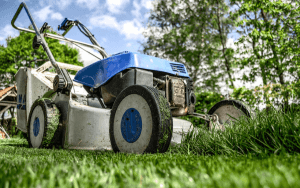

Suppose you feel the need to be productive at all times. In that case, no matter the cost to your mental or physical health, you may be experiencing toxic productivity.
Podcaster and author of Free Time, Pivot, and Life After College Jenny Blake says, Are you constantly working and feeling guilty when you rest? This could be toxic to productivity and harm your health and relationships.
Overcommitting to initiatives, prioritizing quantity above quality and effect, being unable to detach, and depending too heavily on willpower are further red flags. “In the long run,” adds Blake, Burnout, anxiety, and depression signal that this way of working is not sustainable.
And more serious ailments. She sees red and yellow flags as warning signs that something is wrong. Still, many people choose to ignore them in favor of engaging in numbing behaviors rather than addressing the underlying concerns.
Dr. Cole adds that people frequently conflate poisonous production with achievement. As a cultural norm, it represents harmful limits and stress. It’s glorified in various media as a badge of honor. Success, productivity, and competence are all admirable traits; it’s when they come at the price of your health that they become problematic.
Toxic positivity author and licensed mental health counselor Whitney Goodman says, Don’t tie your self-worth to external factors, even positive ones like success. One’s own health and well-being may suffer if one neglects it in favor of working around the clock.
Learn Happy Healthy Life Tips; These 5 Lifestyle Trends Will Be Huge In 2023
There’s no doubt that this is bad for your health. It’s no surprise that your relationships and productivity at work might deteriorate when productivity begins to undermine your well-being.
Find the Heart of the Problem.
Toxic productivity often has deeper roots than the desire for success; that is its most obvious manifestation. Problems with self-esteem, lack of confidence, and excessive pressure to succeed as a youngster are just a few potential causes.
Dr. Cole suggests that the pressure to constantly stay active may be an indicator of unresolved trauma. “Current concussions and even prior and intergenerational trauma may all damage health. Suppose you want to know how these factors affect your health-related behavior. In that case, you need to go within and develop a sense of intuition about them.
Blake suggests taking a close look at your actions. For the following two weeks, try to figure out when exactly your overdrive engages. How frequently do you find yourself energized by your work, and when do you see yourself exhausted?
To make changes to your routine, start small. For example, skip your daily (or weekly) email check-in by only an hour. Bigger adjustments may be in order if you’re part of a toxic work culture that makes little ones impossible or if your manager is toxic.
Escape From the Rat Race


When your sense of self-worth depends on your level of productivity or success, Goodman adds, “it can be really terrifying to slow down.” It’s helpful to choose one area of life and work on limiting or restricting one’s involvement in it.
If you often stay late at the office and put off self-care in favor of work, establish a time of day when you must turn off your computer and phone. Backing up the clock a few minutes is a good place to begin.
And if that nagging thought that you should constantly be doing more keeps popping into your head, Goodman suggests saying these words to yourself:
- Despite appearances, “I am not what I do.”
- “My productivity and my work are only one part of me and my life.”
- “I have permission to take care of myself and relax.”
As Blake points out, even being aware of that voice is a huge step forward. “Thank you for trying to help and keep me safe,” she advises, “but we’ll need to try new approaches now.” She continues, Recognize its goal of securing your success.
Contemporary Housing And Lifestyle Trends in 2023
Importance of Slow Lifestyle in America
I decided to write this because the slow lifestyle has helped me much over the years, and it may do the same for you. It takes some work and time (patience), but the rewards of a slower pace of life will become apparent.
Life For Me is What I Make It.
One of the key benefits of slow living is designing and curating your lifestyle; this entails evaluating what you honestly need and what you truly want to have in your life.
Making a plan for the day might be aided by writing down all the things you hope to do that day. Be honest and itemize what you need to survive and what items you don’t want to live without. There can be no filler. It does not make the cut if there is any doubt about it.
The success you have with slow living depends on how truthful and diligent you are while making and sticking to your lifestyle list.
I Give Attention to the Essentials.
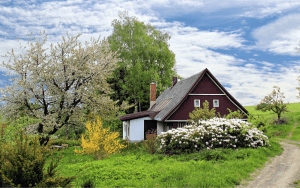

When you adhere to the principles of slow living, you prioritize the activities that truly matter to you. You’d be surprised at how much time you’d have on your hands if you didn’t let distractions into your everyday routine.
Some of the things I seem to overlook on a regular basis are as follows:
- To be honest, I don’t even bother with the news.
- I don’t give a hoot about Hollywood’s love lives.
- What other people do has no effect on me.
- What other people think doesn’t bother me.
- If someone else has something, I don’t care.
- Most of my email needs to be addressed.
The busyness myth, the idea that being active gives us a sense of value, is another thing you should stop worrying about. People frequently wear their hectic schedules as a badge of honor and gloat about how true this misconception is.
Instead of being busy, we can get things done when we zero in on what is really important. Even if you have a long list of things to accomplish and manage to get through it all, you might stand to be more productive.
To rephrase, hectic schedules are not necessary for success. Although it’s not always possible to eliminate unwanted distractions, leisurely living can help us become more adept at doing so.
Focused and Imaginative, I Am.
Living slowly may free up time that can be put to many different uses. One of these is being able to put more of one’s attention into one’s work. There is no pressing need for you to complete the current task immediately so that you may go on to the next one.
The proverbial “spinning one’s wheels” situation.
When given extra time, work can be completed more effectively. With more time on your hands, you may utilize your imagination to come up with novel solutions to the problem or explore new avenues of exploration.
I’ve been trying to live more slowly for a while now. It has nothing to do with trying to dodge responsibility or life in general. The key is to prioritize (rather than strive to complete) as many tasks as possible.
My productivity and quality of work both increase when I take my time going about my daily activities. If you give it a go, you’ll discover the same thing.
I Felt Less Anxious and Less Stressed.
Anxiety and stress are universal phenomena felt by everyone at some point. However, when our way of life restricts our capacity to deal with them, as in my situation, the issues might become much more serious. I lived a life of extreme stress and worry for many years.
My stress and anxiety levels decreased once I picked up some basic techniques for leisurely living. It makes sense, too. To live slowly is to prioritize the things you truly care about over the stuff you don’t need or want.
By reducing the amount of distractions in your life, you’ll have more time to focus on the activities that truly matter to you. Having more time on my hands has allowed me to focus on my health, both mental and physical, which has greatly reduced my levels of stress and worry.
Slow living has helped me manage my stress and anxiety levels, but it took some time and practice to get there. It may work for you, too.
Once Again, I Found Fulfillment in My Work.
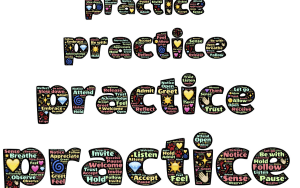

Bringing the principles of slow living into the workplace was challenging for me at first, but believe me when I say that it is achievable. As we talked previously, I made a “lifestyle list” in which one of my goals was to “work for myself in the long term as a content creator.”
However, I needed to focus on leisurely living at my current job, and getting there would take time. To give some background, at the time, I was the Vice President of Marketing for a sporting products firm.
Besides my regular duties, I frequently had to attend a number of meetings. That is, I included slow living practices while working in a corporate environment similar to the norm.
- I cut back on my time spent with friends and family.
- As a result, I no longer micromanage.
- I gave my whole attention to whatever I did.
- I gave my mind a rest between major projects.
- I also began to take less time at work without sacrificing productivity.
I eventually went out on my own and became a digital nomad while working from anywhere in the world. It’s worth the effort to work for the life you want.
I Engaged in Attentive Meditation.
Mindfulness, in the context of slow living, is developing the skills necessary to monitor emotional states and restore equilibrium whenever they get disrupted. Let me offer you some illustrations.
Find out how to relax and get your bearings. I frequently take time to sit still with my eyes closed and focus on my breathing. I focus on maintaining mental silence. With practice, I was able to swiftly relax my body and mind, which aided in my ability to fall asleep.
Master the art of regulating your feelings. Even when I make an effort to take things slowly, there are occasions when I give in to frustration. As a digital nomad, I find myself in the queue at passport control more often than not.
Already exhausted from the day’s activities, I was dreading the prospect of waiting in line for another hour. As I indicated above, I stood with my eyes closed and my attention on my breathing; this brought me back to an emotional center, and within minutes, I felt much better.
Therefore, being conscious has a double meaning for me. First, you need to practice and learn methods to center yourself. Second, you need to keep track of how you’re feeling throughout the day and put these techniques into practice to keep your stress levels low and your happiness levels high.
You’ll get better and better at it after trying it a few times and realizing how wonderfully it works.
Humbleness is a Virtue I Picked Up.
Being thankful for the opportunity to live the life you choose is just one component of slow living. Being grateful is one of the great gifts and rewards for the hard work it takes to construct your lifestyle.
Communicating my feelings has always been difficult for me. All that changed once I started practicing slow living because I took time to work on living a life I like. Then, I realized the importance of practicing gratitude.
An emotional connection to oneself is the foundation of gratitude. We can’t express gratitude unless we take stock of the good things happening in our lives, including our thoughts, feelings, and experiences.
How Can I Practice Gratitude?
Several times a day, I pause for a minute or two to reflect on the many blessings in my life. For instance, I appreciate having a safe place to sleep and food to eat. I’m grateful for the support of my loved ones.
Thank goodness I ascended that hill because the view from the peak was spectacular. When I get a shopping bill, I’ll sometimes jot down, “I am grateful for these groceries,” on the back since the act of writing it down helps it sink in. It seems ridiculous, but give it a go; you might be surprised.
How Secure Are We; Against Threats to Our Financial Strategy?
It’s impossible to feel gratitude without first recognizing it as a feeling. Make it tangible by stating it out loud or writing it down somewhere.
Happiness Finally Found Me.


To be happy, you need to accept yourself for who you are and be proud of your accomplishments (without coming off as arrogant).
The key is to stop caring about what other people think of you and your actions.
Through slow living, I was able to hone in on my own unique identity and desires, allowing me to craft a personalised approach to health and wellness.
When our daily actions are guided by our deepest convictions, we are more likely to experience lasting happiness. When we are content with our lives, we are genuinely blessed.
Living frugally, buying fewer stuff, and doing more is one path to happiness. The idea is to prepare for the future without letting fear or anxiety get in the way.
You may practice happiness by keeping track of times when you feel irritated, discontented, or angry. These are what we call “trigger emotions,” and as you start to notice and pay attention to them, you may take a moment to reflect on their origin.
Genuine happiness is difficult to achieve. Practice, practice, approach is what got me where I am now. Therefore, I recommend it to everyone who wants to develop.
Although unpleasant emotions are inevitable, we need not give in to them or allow them to grow into something more destructive. When bad things occur, we must learn to accept them, work through them, and then let them go. The last thing we want is to make matters worse by overreacting.
When you choose a slow lifestyle, you get rid of the things you no longer need or want. The fact is that life is full of ups and downs, and we must learn to accept and cope with them. For instance, instead of pretending I don’t care when my feelings are wounded,
I let myself admit it and deal with it. In fact, I am concerned. If someone sends me a rude message online, it hurts my feelings and makes me unhappy. Here’s the problem, though.
It doesn’t last long at all. I know how much it stings. Let a minute pass, and then double-check that I realize it’s finished. I might try some deep breathing if I’m still bothered by it.
Do not suppress your negative emotions lest they pile up and lead to unwarranted worry and anxiety. Recognize and deal with these uncomfortable feelings when they arise. Keep going.
When you finally master this, you’ll be blown away by how much better you feel.
My Daily Routine is Centred on Self-Care.
Today, nothing is more important to me than taking care of myself physically and mentally. I had never made a deliberate effort to put my health first before I started practicing slow living.
As I indicated earlier, I used to be too preoccupied with pursuing professional success and accumulating wealth to recognize when declining health was beginning to negatively impact my day-to-day life. Ignoring my health for a long period led to its current state.
To start, I stopped listening to what my body and brain were telling me. Then I denied the warnings for a couple of weeks, a couple of months, and before I knew it, years had gone by, if not decades.
Before practicing slow living, I never addressed my mental and physical well-being while making life decisions; I was on autopilot. One way in which slow living improves our lives is by encouraging us to put our health first.
Some of the health and fitness-related lifestyle choices I’ve made include the following:
- Every day, I shall give myself the gift of silence.
- I resolve to practice deep breathing every day.
- Every day, I will eat healthily and work out.
- I will put in only a few extra hours.
- If I don’t get everything done today, it’s good with me.
- When I feel the need to take a break, I will.
- I will sleep 9 hours each night.
This is why a slow-paced lifestyle is so beneficial to health. Think about what you need for your emotional and physical well-being, and try to incorporate it into your daily routine.
I’ve Reduced My Outgoings and Increased My Savings.


Many people find that decluttering and buying less helps them relax and take pleasure in life. Less stuff equals less stress, I swear to you. And, honestly, there’s nothing wrong with spending on something we truly want every once in a while.
A Visit to Mahudand Lake Kalam SAWAT.
We plan to cut down on unnecessary expenses and clutter as feasible. Everyone is different, but having less possessions and more money in the bank makes me feel more at ease.
When you downsize your home and give away or sell the items you no longer need or want, you’re left with simply the necessities. Having only what you need and want, both emotionally and materially, is a central tenet of slow living.
Smaller homes are more affordable overall and less expensive to equip and maintain. Look for a property without a garden if you want to save money and effort on maintenance. Learn to shop for sets rather than separates to save money and make better use of your wardrobe space.
All of these seemingly little actions build up a way of living that helps you save money without compromising on the things you need and want.
Being Patient Might Be Challenging At Times.
It’s easy to feel like you’re living in a society full of impatient individuals who want everything to go their way and react angrily at the slightest setback.
The good news is that with some time and effort spent practicing slow living, we can learn to become more patient people. Understandably, people nowadays are less patient than they once were.
Meals made at home are being replaced by fast food. Many products you buy online at Amazon might even be delivered on the same day. Amazing. Our most treasured media may now be played at the push of a button.
However, when we choose a slow lifestyle, we make deliberate attempts to move at a more relaxed, organic pace. Humans are action-oriented creatures that need to feel like their efforts are worthwhile and their lives have a purpose.
In the slow lifestyle, when we feel pressed for time, we take things easy. We are aware of our stress and irritation levels and employ this knowledge to counteract them with patience.
Patience is a decision we make. Whether we choose to be patient or impatient is a choice we make for ourselves, but leisurely life encourages patience.
FAQs
Just what does “slow life” entail?
By doing things more slowly and being grateful for what one has, members of the Slow Living movement want to achieve a more harmonious and fulfilling way of life. Taking extra time for one’s own well-being is one common definition of “Slow Living.”
What should I do to make my pace of life more leisurely?
Here are some methods to ease into a slower pace of life:
- Wake up early. …
- Alter your usual habits.
- Create room and time for what really matters.
- You need to isolate yourself more.
- Say “no.” Cut down on your responsibilities without guilt at home and work. …
- Put in less effort but accomplish more.
- Take in the quiet.
- Eliminate any interruptions.
Just what are the benefits of doing things slowly?
In what ways does this help? Your health, relationships, time, money, depth of knowledge, and ability to make good choices will all benefit from slowing down.
Define “fast life” with “slow life.”
Lifestyle, Quick and Slow: Can life-span perspective predict…
People with quick life histories are more likely to act on impulse and focus on the here and now. In contrast, those with slow life histories are more likely to plan ahead and make more considered choices.
Why did the years fly by so quickly?
One’s memory and life experiences have a role in shaping how they view time. A week is a significant chunk of time in the life of a child of 8 years old. A week is a significantly smaller fraction of an 80-year-old’s life. Therefore, it seems much shorter.
If you are interested in more exciting lifestyle articles, please visit blogkingworld.com. Like it, share, and comment for our further improvement. Thank


